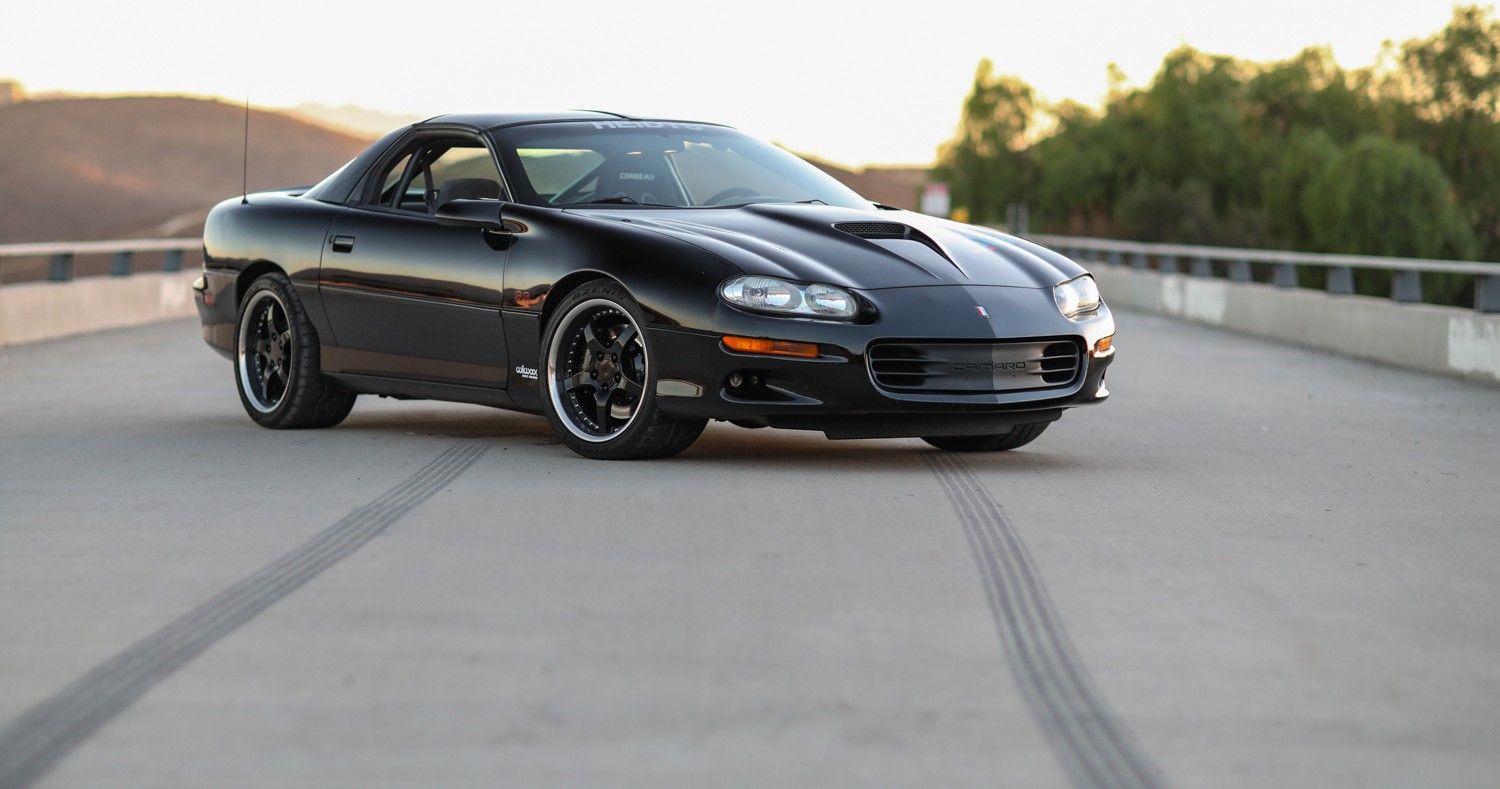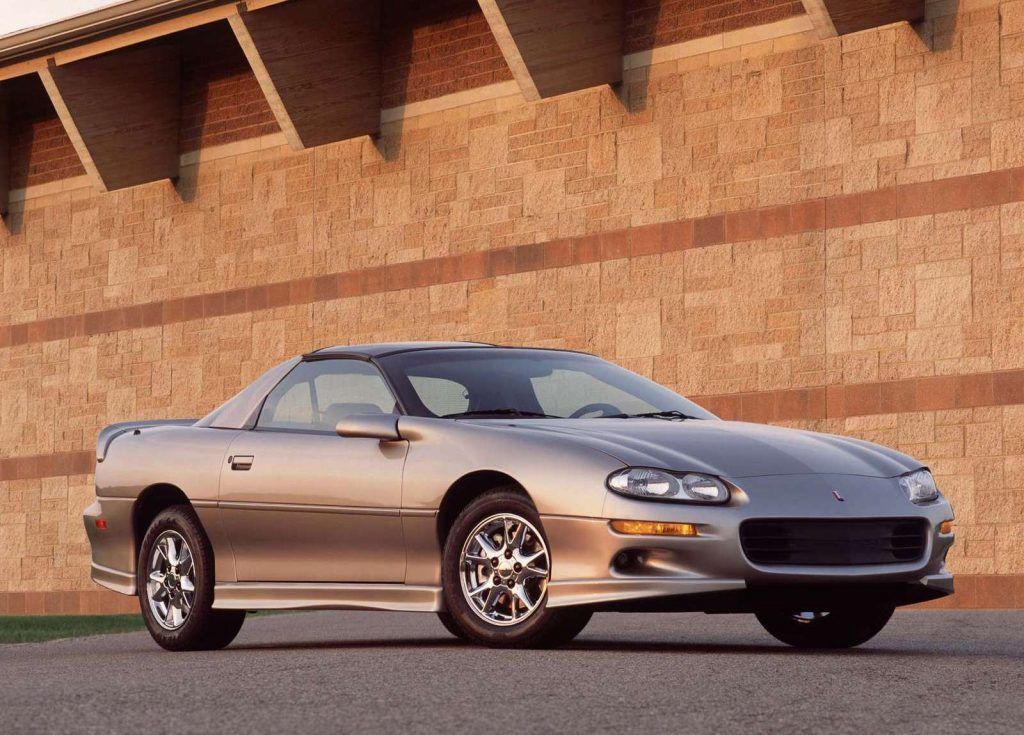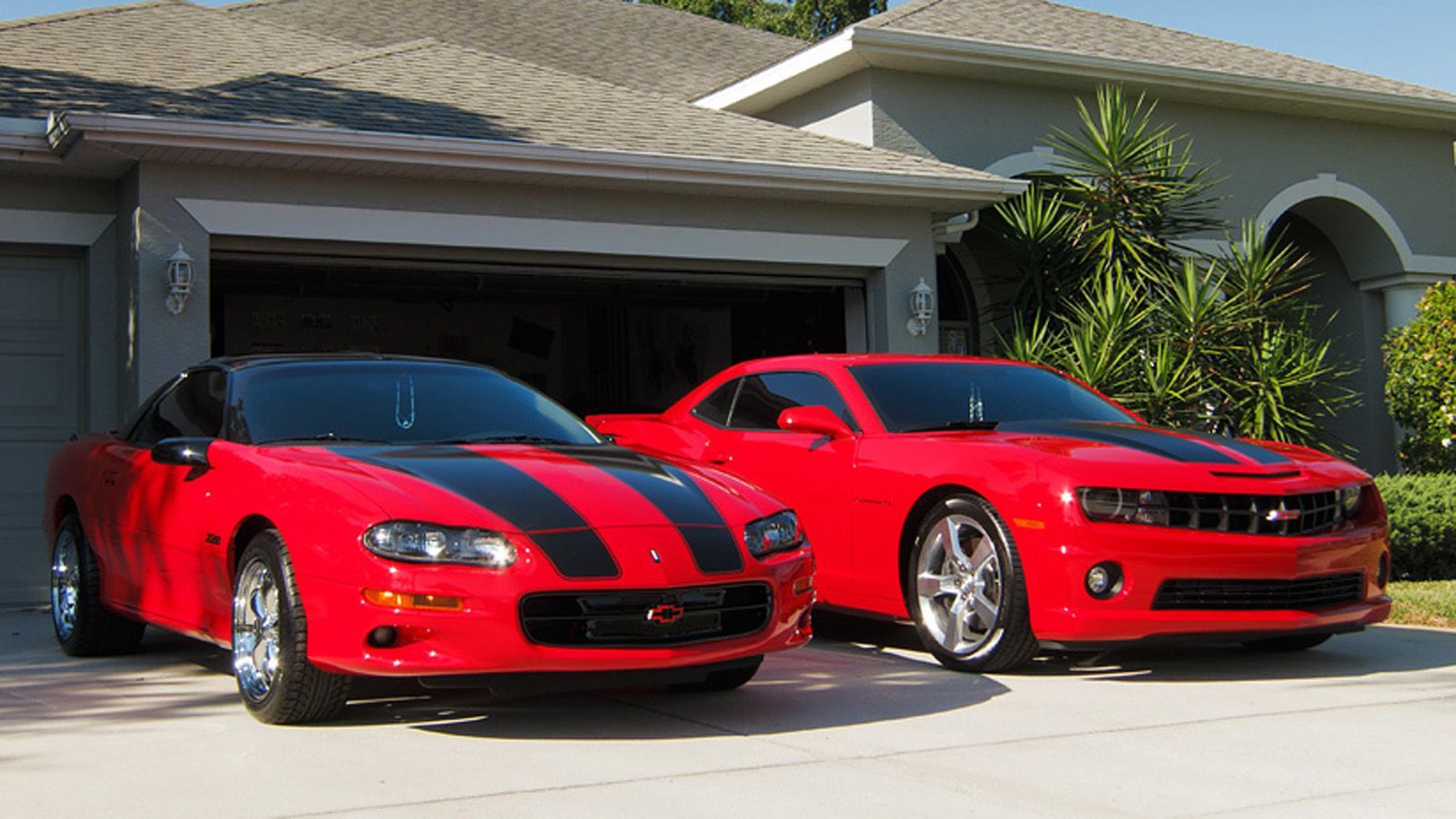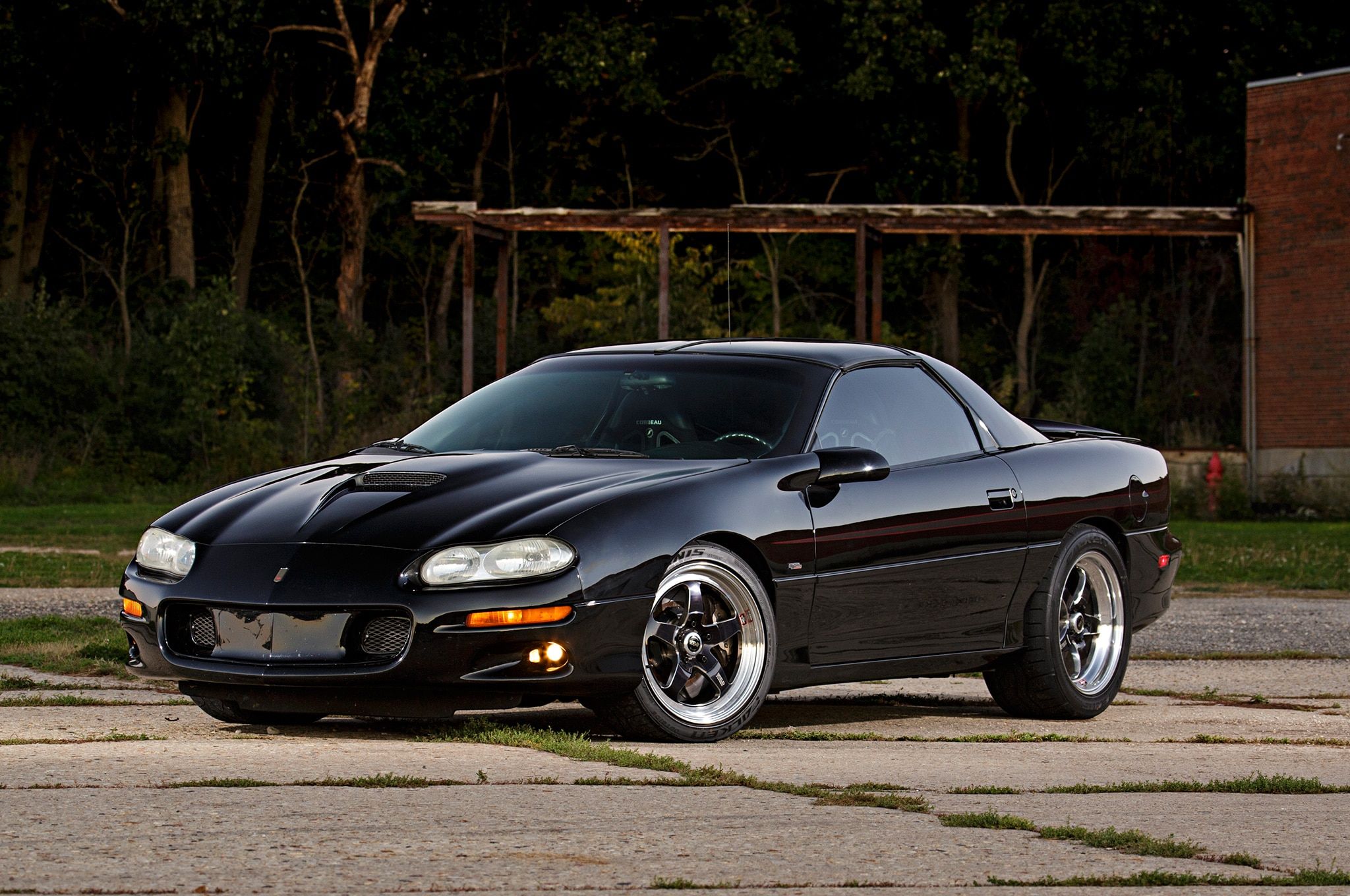The Chevrolet Camaro has a history nearly as long and storied as its eternal rival, the Ford Mustang. It’s been in existence for nearly as long, across as many decades, and it has held Ford’s feet to the fire the whole time, even if the two models started to drift apart somewhat in styling and approach (until the great muscle car revival of the late-2000's, that is).
But throughout its over 60-year life, the Camaro name has seen itself fitted to some impressive and revered machinery. It has also seen itself fitted to some cars that, either through pop culture references or simple prejudice, have earned some rather unsavoury reputations. For example, we almost instinctively refer to the third-gen Camaro as the car for people with mullets, and, for the sake of this piece, the fourth generation as the “catfish” Camaro, due to the proportions and shape of the front grille.
The fourth-gen has reached the bottom of its popularity curve, which is now starting to angle upwards again as people realize the potential for cheap thrills to be found in a used fourth-gen Camaro. Their interiors might be made out of worse plastic than a dollar-store iPhone case, and the styling isn’t to everyone’s tastes, but if you’re looking for a cheap platform on which to build a solid performance car, the catfish Camaro might suit better than you think.
But how does it compare to its predecessors and, for that matter, the fifth and sixth generation cars that have come out since? How have they held up since the mid-1990s? Should you buy one? Read on to find out.
Fourth-Gen VS The Past
Just looking at it, it's easy to see how the fourth-gen draws on its predecessors. The long hood, steeply raked windshield and thick B-pillar were pulled from the third-gen, with some typical 1990s rounding and smoothing of the edges. The grille, especially from the 2000s-era refreshed cars, which you see pictured above, draws on the Camaros of the early-1970s. The exhaust note from its available V8 engines was and always will be timeless.
The fourth-gen is often referred to as the "F-body" Camaro, in the same way, we refer to 80s and 90s Mustangs as "Fox-Body," but the GM F-body platform actually dates as far back as the first-generation Camaro, which debuted in September 1966. That means the platform was in use from 1966 all the way until 2002, a span of 36 years. First-generation cars were available with a pretty broad selection of inline-6 and V8 engines, including the 350 cu. in. and 427 cu. in. small- and big-block engines, both of which have become staple powerplants for resto-mods and swaps.
The second-generation Camaro debuted in 1970, and it was then that Chevy's design started to take a big departure from the boxy, short-deck shape of the Mustang. It had rounder headlights, a more sweeping and curved roofline, and a longer tail with an up-swept rear spoiler modelled after stock cars. It still ran on the F-body platform, and it also had both small- and big-block V8s. It was also the first appearance of the "3800" series 3.8l V6 engine, which would grow to become one of GM's most revered and reliable powerplants, even if it was the entry-level option in the Camaro.
The third-gen Camaro practically defines 1980's American car design. It has prominent square sealed-beam headlights and boxy features in its grille, window line and side profile, but it continues the long, rounded rear window shape and up-swept rear spoiler. This car is probably best known nowadays for carrying a dead cow on its roof in a controversial Top Gear special episode. It was also the first Camaro to get fuel injection, though it's not uncommon to see these slightly primitive systems swapped out for more reliable and serviceable carburetors. It was also the first and only generation of the iconic IROC-Z trim, an homage to the International Race of Champions series.
The fourth generation is a thorough modernization of the third, and it carried over its engines with some much-improved electronics. This was the first use of the LT1 5.7l (350 cu. in.) V8, as well as the aluminum-block 5.7l LS1 from the Corvette C5 in the Camaro SS.
The New Camaro: International Muscle Car Of Mystery
Unlike the Mustang, which soldiered through the relative drought in American car design of the early 2000s, the Camaro went away for a few years for a massive redesign and a complete rethink of the position of the car. No doubt spurred on by the retro-styled S197 Mustang that launched in 2005, GM decided that a similar approach could play to the strengths of the Camaro name in a reboot of the franchise.
However, this new Camaro wouldn't be the same home-grown Mustang competitor that it once was. There the fourth-gen and previous Camaros were designed and built in America, but the new Camaro wouldn't exist without Canada and Australia.
The new car would run on GM Holden's Zeta platform, upon which the Holden Commodore was also built, and its development, design, and engineering were done by Holden engineers in Australia. It then went into production at GM's Oshawa Car Assembly plant in Oshawa, Ontario, Canada.
And so, with some help from Michael Bay's Transformers reboots, the all-new fifth-generation Camaro launched to much hype and fanfare in 2010. It was a big hit, though sales have tapered off in recent years, as they have for many other performance cars.
The car was updated again in 2016 for its sixth and current generation. It now sits on the GM Alpha platform, which it shares with the outgoing Cadillac ATS-V. GM has made huge improvements to the car's handling and performance characteristics, and particularly in ZL1 configuration, the sixth-generation Camaro is a seriously quick car in straight lines and indeed in corners. The Camaro is a track-capable sports car now thanks to GM's excellent chassis tuning. It's also made in America again, leaving the Dodge Charger and Challenger as the only remaining dual-citizenship muscle cars.
Buying One Today: Performance Bargain Or Cheap Junk?
As mentioned at the top, this car is slowly creeping up from the bottom of its popularity curve, and people who want to go really fast for not a lot of money are starting to pick up on the potential that lives within the fourth-gen Camaro. You can find a good number of cars well under $10,000 if you're not too picky, and nice SS and Z28 models can go as high as $15,000 or $20,000, which is a big ask if you're more concerned with speed than specifically having a fourth-gen Camaro. They'll certainly come cheaper than a comparable Z06 C5 'Vette.
What does all that get you? Provided you've got a 5.7l LT1 V8, you're starting with a base of 275 horsepower. That's not massive, but LT1s are very easy to tune and modify for more output: you could run aftermarket headers, injectors, high-flow fuel pumps, and ECU tunes to name just a few. There are also plenty of upgraded suspensions, braking, and cooling kits available for these cars, which you can use to mold it to fit the type of driving you intend to do with it. Your safest bet is to chase straight-line performance, but with enough fiddling, these can also make great autocross or even track-day cars.
You're also getting a big, comfortable V8-powered cruiser capable of devouring miles, with a sizable liftback rear hatch that can fit plenty of things. If you can live with the ugly-looking, poor quality plastics in the interior, this is one of the more mechanically dependable "sporty" platforms that normal people can buy, and even in bone stock form, it could be an excellent second car or even daily driver, if you can swallow the fuel costs.
If you're after big noise, big power, and big, soft seats, a fourth-gen could be the car for you. It came with GM's 4L60E 4-speed automatic or a Tremec T-56 manual transmission, both of which can take tons of abuse with very little complaining.
The fourth-gen isn't a genuine classic yet, like the first and second generations, nor is it quite as decade-defining as the third-gen was for its time in the 1980s. By 1993, the Camaro name may have fallen from grace somewhat, particularly up against the comparatively svelte and sporty Fox Body and early SN95 Mustangs, but its popularity in sales means there's still plenty of them out there for us to get our grubby hands on.
It may never be as cool as an IROC-Z or as beloved as a 60's classic, but the catfish Camaro is a good car in its own right with tons of go-fast potential.




